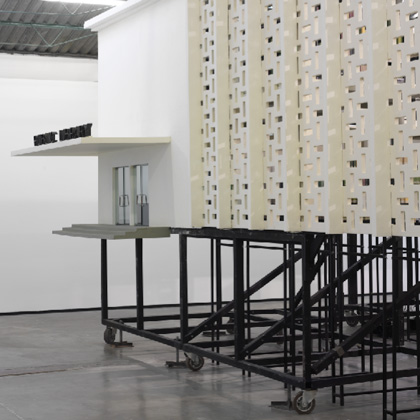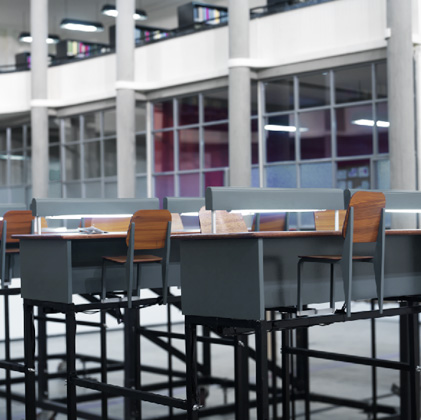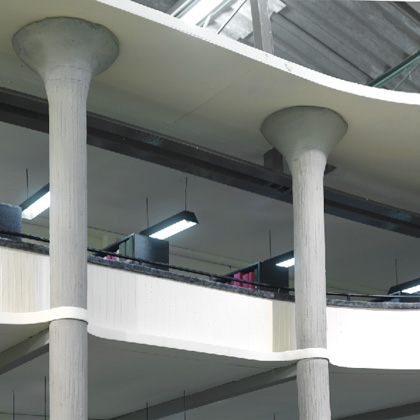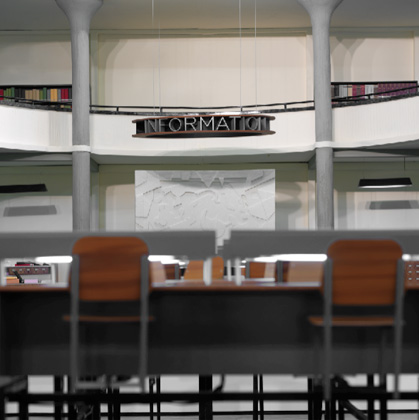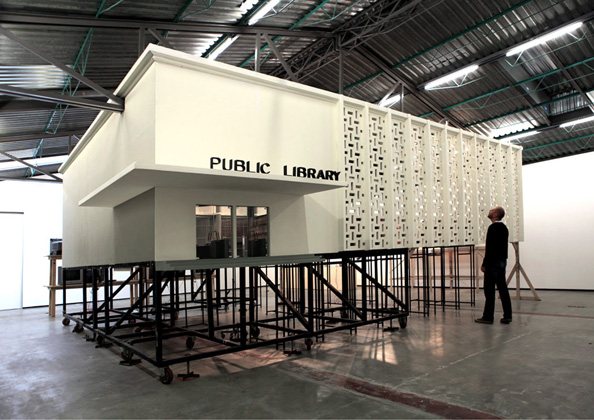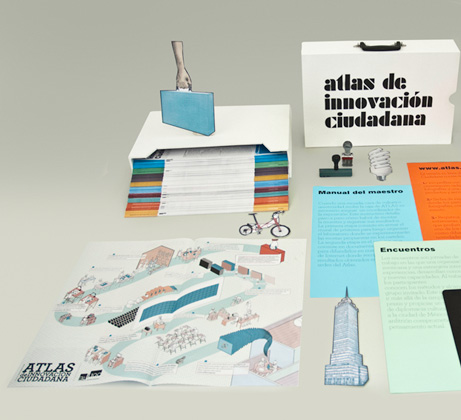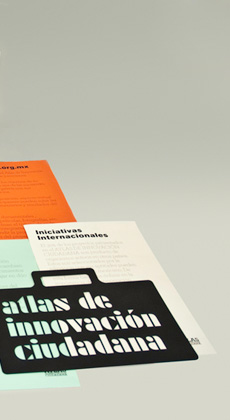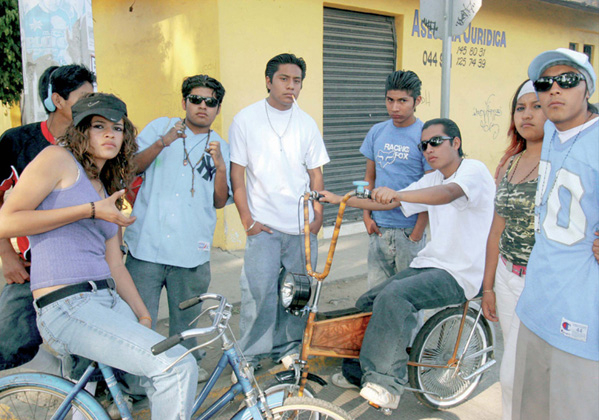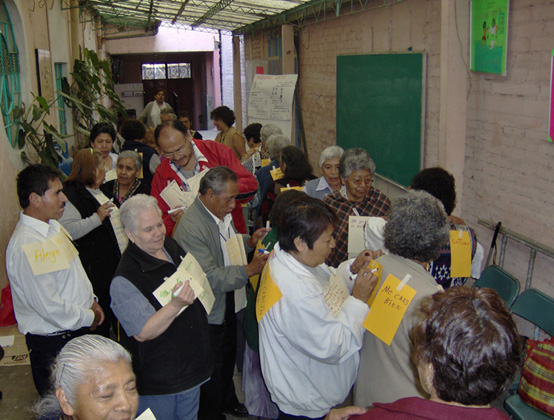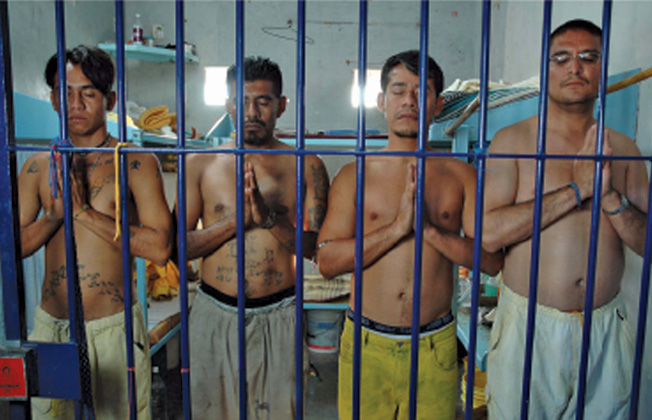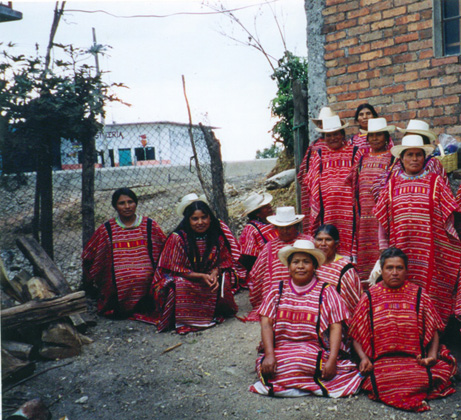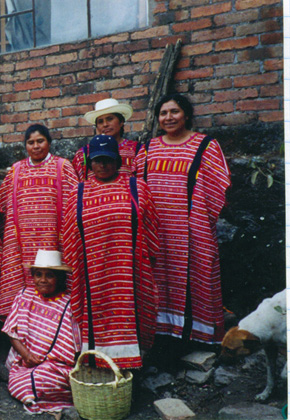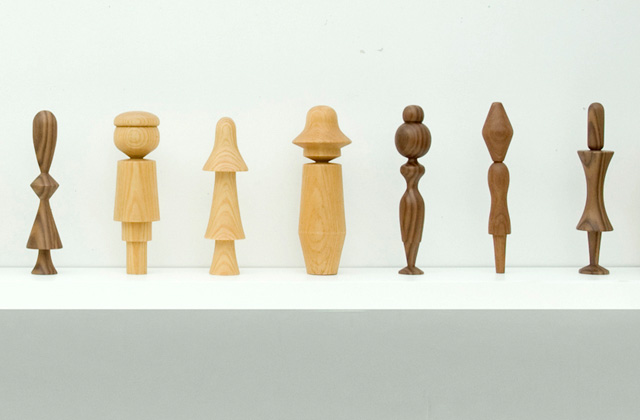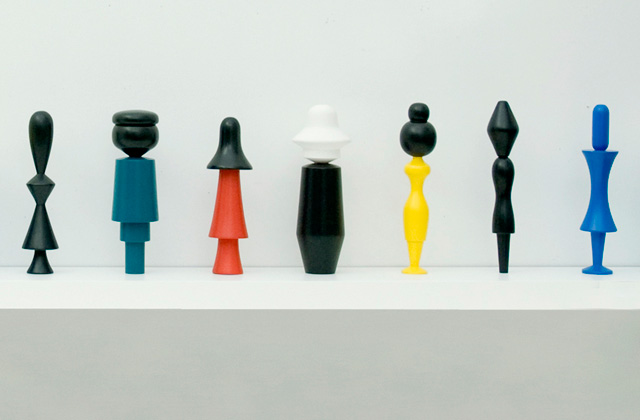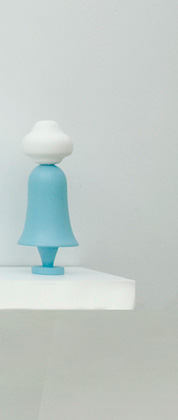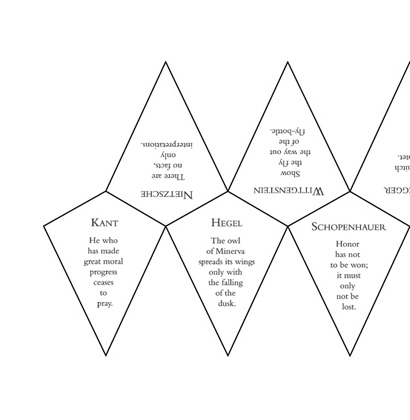| PEDRO REYES |
|
Puppet stage, installation
2009
|
|
The action takes place in a library. It is a mid-century functionalistic building notable for its post-war auserity. If you look closely you may recognize some features which have been borrowed from famous architectural masterpieces of the time: the capitals of the columns are like those in Le Corbusier’s Assembly building in Chandigarh, the tables and chairs are inspired by Jean Prouvé, the signboard’s letters are similar to those created by Richard Neutra, the armchairs are also inspired by Le Corbusier, and other details are taken from Jorn Utzon. The atmosphere is reminiscent of a generic modernism that could belong to any country, like Korea, Brazil, Mexico, the U.S. or southern Europe. We wanted the plot to be able to adapt to any geographical location.
As a symbolic site the library represents XX Century humanism; a public space for education was created. The fight to take control of the library also represents the current debate regarding the privatization of certain public services that used to be associated with the state. In general, it’s a caricature of the political-economic doctrines and models that decisions are based upon today.
(Production designer: Roberto Bonelli, Art production: Carlos Cosío) |
|
publication, portable exhibition, website, group activity
2009
|
|
The Atlas of Civic Innovation is a box/portable exhibition that contains a hundred sings.
Each sign will explain the operation of an exemplary initiative, which was selected for its inventiveness and effectiveness to face a social, economic, cultural or environmental challenge.
The signs will represent a process in a graphic and very synthetic way, they will offer a point of entry to a certain topic.
In conjunction with public and private education systems, these boxes will be distributed in schools, universities, cultural centers and meeting places. At every location, the contents of the box will be displayed, resulting in hundreds of micro-exhibits. This powerful pedagogical tool will allow the diffusion of materials that are current and of HIGH CONTENT at a VERY LOW COST, creating new audiences in areas with limited or no cultural offering. Social network In addition to the box with the signs, the Atlas will manifest itself as a Web 2.0 platform, enriched constantly by its users’ content. On this platform, there will be interviews, photo galleries, statistics, discussion forums, and recipes. It will provide the valuable element of feedback, an index which will show three types of profiles: 1) organizations 2) projects 3) citizens. Many times there are citizens that participate in many projects, and projects that are being promoted by more than one organization. This type of cross-search is not possible currently; that’s where the utility of this social web becomes evident. One of our tools are the recipes that are prepared by every initiative chosen at Atlas (from how to make a compost box to organizing a gender workshop). The recipes are miniature versions of the techniques that every initiative has been using and in which they have become experts. To explain to replicate and therefore increase the coefficient of social transformation. Every school and cultural center will be able to show photos of their exhibit online. Not only how they put the signs up but their own interpretation of the recipes. This will generate a very useful archive that will be constantly updated by its users. To the AUTHORS of the recipes we ask that they also be TUTORS. They shall respond to doubts and guide whoever needs it, to find sources to increase their knowledge. The Atlas will give visibility and speed up the exchange of experiences in the public sector, the private sector and civil society. Many of these initiatives are hybrid models that combine more than one sector. These stories show that change is not always based on economic incentives, but on identifying mutual disposition. Workflow diagram. Will show how an innovative idea, linked with work, translated into results. It will enumerate the actors that participated and the phases that they went through. This step-by-step explanation is presented as a story that is easy to assimilate, and to relate to, as the testimonies are narrated directly by the agents of transformation. A great part of the discourse of citizenship has been centered on our rights, but the eloquence of these practices stems from the ability of showing the citizen’s responsibilities. Not responsibilities that have been dictated, but groups or individuals that find in their work a sense of urgency, products of an act of conscience: “If I don’t do it, no one will.” |
|
Wood, paint
2009
|
|
In the design of Baby Marx characters I had the honor to collaborate with Takumi Ota, a Japanese puppet maker who had worked in the sixties in the making of the legendary puppet show Hyokkori-Jiotan-Jima.
We decided that all characters should have all-around symmetry, like the folk toys done in the wheel. This gave the characters a very modern look, similar to the designs of Oskar Schlemmer in the Bauhaus theater. This studies also seek to provide every character with a characteristic silhouette so they could be recognisable when featured at different scales and degrees of detail.
|
|
Corian structure
2006
|
|
Casino Filosófico is a series of polihedra, which work as dice or dreidels. Each piece works as an oracle. The player may ask a question and make the dreidel spin, the outcome of this chance operation will be the attitude to overcome a given situation.
I think that oracles steer a peculiar state of mind. An intimate relationship is created between the user and the system. Even if the information provided is rational, the mind is open to an intuitive interpretation of a symbol.
There have been four pieces made on this series: Casino Filosófico I [Six schools of Greek Philosophy] 2006 Casino Filosófico II [Six renaissance philosophers] 2009 Casino Filosófico III [XIX century philosophy in German] 2009 Casino Filosófico I [Typographical dice] 2009 |
|
Stainless steel frame woven in vynil cord
2009 - 2010
|
|
If a Room has square spaces the Capula shall be round
If a Room has rigid walls the Capula shall be elastic If a Room divides the inside from the outside the Capula shall be permeable If a Room is grounded the Capula shall hover If a Room is steady the Capula shall rock or swing If a Room has walls that block the light the Capula shall radiate the light If a Room creates a fixed field of vision the Capula shall be kinetic If a Room needs furniture the Capula will turn itself into furniture If a Room hides from the view the Capula allows a glimpse If a Room is an ensemble of parts the Capula shall be a continuum In fact, a sense of essence is, in essence, the essence of sense, in effect. Cupola Cupule Capsule + Couple Copulate Capillary __________ CAPULA |
